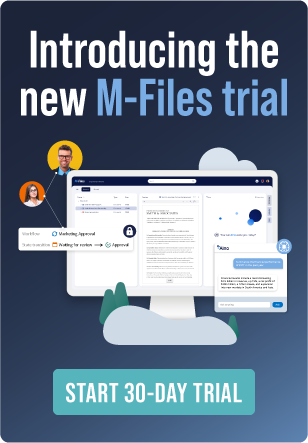What is Democratization of Information? An Easy Example and an Obvious Caveat

Ah. Democracy. A hallowed term ever an inspiration to citizens of the free world. A word that harkens us to Abraham Lincoln’s famous description: “Of the people, by the people, for the people.” And it’s with a nod to Lincoln’s phrasing that we describe the democratization of information in the enterprise the same way. Democratization of information means that we extend the power of business information that’s created by the people, to the people.
The Democratization of Information in the Enterprise
Stated another way, it means that information created by employees becomes available to all other employees. And isn’t it better this way? When staffers have access to information, it allows them to make better decisions; it gives them visibility, perspective and key insights; it is the ultimate in transparency. Information democratization is the great equalizer.
Information Silos vs. Information Democratization
Let’s give an example:
It’s 2005. Enterprise information is scattered throughout the organization like a desolate wasteland, with PDFs and spreadsheets floating around like tumbleweeds. Some are on a master network drive. Some are in the ERP solution. But most documents live siloed on the computers of individuals, far away from the eyes of everyone else.
Salesman John has an epiphany and changes a few slides to the sales presentation. These changes have made a huge difference and his sales have seen an uptick. He means to tell his team about these changes but the email sits in draft as he moves on to other things.
No one will ever happen upon the tweaks until John gets around to explaining them.
Finance staffer Elaine keeps invoices on her desktop in a folder and uploads them into the financial software upon payment, when she has the time. Other departments wonder where this invoice is, or if that invoice has been paid.
No one really knows about invoices until Elaine tells them what’s happened, or they show up in the financial software.
That’s a simplified version of siloed information. Now, let’s see democratization of information in action.
It’s 2020. The organization has M-Files, which serves as a centralized information hub, connecting information contained in network folders, ERP, the financial software, SharePoint and other line-of-business applications.
Salesman Sam is researching a current client, looking for ways to expand the account. He searches for relevant information in M-Files and finds:
- A previous salesman’s notes about another opportunity within the client organization
- Audio of a phone call between the client and his customer success team, where the client explains why he’s so pleased with the company’s products
- Previous invoices reflecting pricing discounts and promotions that the client has taken advantage of
- A news release issued by the client a year ago
- An incomplete case study draft that the marketing team is working on with this client
And Sam gets all of this in one nice tidy view. He didn’t have to ask all 264 of his colleagues if they’d ever had any dealings with this client. He searched and he found information from other people, information that helped him make better decisions, helped him craft a value proposition to expand the account.
That’s the democratization of information in the enterprise.
The Caveat
The one consideration to full-on democratization of information is security and user permissions. Quite obviously, sensitive information needs to be secured and accessible only by those it should be accessed by. With dynamic user permissions offered by information management platforms like M-Files, things like employee salary information, customer payment information and other sensitive data remains visible to those who have correct permission.
Everywhere you look, democratization is happening in business.
Uber gave everyone the opportunity to be a driver and a passenger — without owning a single taxi.
AirBnB gave everyone the opportunity to own rental property and be a renter — without owning the real estate.
Amazon gave everyone the opportunity to be a retailer and a consumer — without owning the products (in most cases, anyway).
In the same way, companies need to democratize enterprise information. They need to give their employees the power to be information creators and information finders, all in the same swift motion. The path to this pillar of digital transformation may be meandering, but it’s worth it.
As former Taiwanese President Chen Shui-Bian said, “The road to democracy may be winding and is like a river taking many curves, but eventually the river will reach the ocean.”




